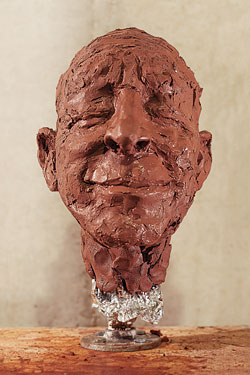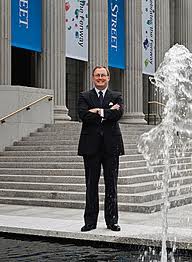Lynn Zelevansky became director of the Carnegie Museum of Art in Pittsburgh about a year ago. I don’t know her, though I believe I spoke with her in her previous job, as curator of contemporary art at the Los Angeles County Museum of Art.
 That’s a caveat, because I’m about to say that I liked what I heard in an interview she gave to the Pittsburgh Post-Gazette — yet it’s hard to tell from a distance whether her actions are in line with her words. The P-G says that she’s making small, but meaningful changes, while insisting on quality, attempting to reach wider audiences, and re-evaluating the collection on an ongoing basis. All good generalities.
That’s a caveat, because I’m about to say that I liked what I heard in an interview she gave to the Pittsburgh Post-Gazette — yet it’s hard to tell from a distance whether her actions are in line with her words. The P-G says that she’s making small, but meaningful changes, while insisting on quality, attempting to reach wider audiences, and re-evaluating the collection on an ongoing basis. All good generalities.
Here are a few specifics I like:
She wants to open at noon and stay open until 8 p.m. every day.
She will close food service in the Hall of Architecture in November because it was damaging the architectural casts, which will be restored.
She aims to do more ambitious exhibitions, even though it meant dispensing with the Associated Artists of Pittsburg show in 2011. (Not to diss local artists, she outlined other ways the museum will support local artists.)
She’s looking for a sponsor for free-admission nights.
She wants to let people know how the museum operates, and has begun an e-newsletter “Inside the Museum” (one post, in August, so far) as well as programs to detail what goes on behind the scenes. On Sept. 30, she’ll give a talk herself, talking “frankly and personally” about her museum experiences.
More at the P-G here.
Zelevansky is on the record now, and I hope her various constituencies and board members hold her to these goals. Otherwise, I’ll have egg on my face, too.
Photo Credit: Courtesy of LACMA

 Lander did not mention the visual arts, except in a section on the popularity of arts degrees, which could include “actual art.”
Lander did not mention the visual arts, except in a section on the popularity of arts degrees, which could include “actual art.” Let me count the ways:
Let me count the ways: In many corners of the art world, the cultural event of the fall season will be the opening on Nov. 20 of the much-awaited Art of the Americas wing at the
In many corners of the art world, the cultural event of the fall season will be the opening on Nov. 20 of the much-awaited Art of the Americas wing at the  But in hindsight, Rogers has unquestionably made the MFA a better place. He may have saved it.
But in hindsight, Rogers has unquestionably made the MFA a better place. He may have saved it. 